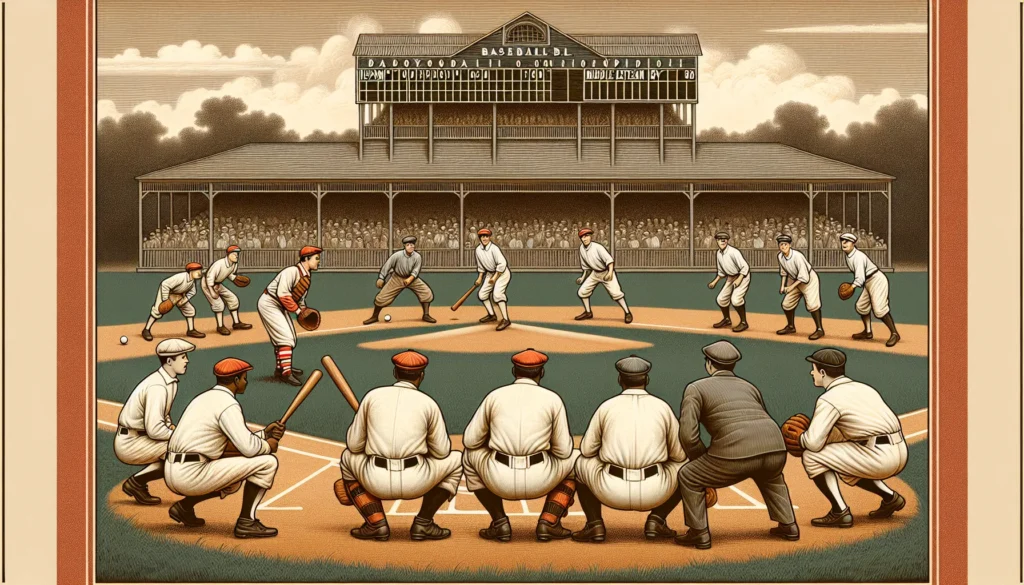
Baseball is a sport that’s captivated fans for generations, with its unique blend of strategy, skill, and tradition. If you’re new to the game or simply curious, you might find yourself asking about one of its most fundamental aspects—how many innings are in baseball? Understanding this key element is essential to grasping how the game unfolds and why it’s structured the way it is.
Unlike other sports with fixed time limits, baseball’s innings create a rhythm that keeps you engaged until the very last play. Whether you’re watching a professional game or cheering at a local field, knowing how innings work can deepen your appreciation for the sport. So, let’s dive into the basics and uncover what makes baseball’s innings such a vital part of the game.
Understanding Baseball Innings
Innings define baseball’s flow, setting it apart from timed sports. Understanding innings helps you follow the game’s progress effectively.
What Is an Inning in Baseball?
An inning in baseball is a primary unit of play, divided into two halves. Each team takes turns batting and fielding during these halves. The visiting team bats in the “top half,” while the home team bats in the “bottom half.” An inning ends once both teams record three outs.
Major League Baseball games consist of nine innings. If the score is tied after nine, the game extends into extra innings until a winner emerges. Standard games can last longer when teams struggle to gain an advantage.
The Structure of an Inning
Each inning unfolds in two parts: offense and defense. The batting team aims to score runs, beginning with the first batter at home plate. Pitchers from the opposing team work to eliminate batters through strikes, flyouts, or groundouts.
On defense, fielders support their pitcher by making plays to get batters or baserunners out. After three outs, teams switch roles. Across nine innings, this cycle repeats, creating opportunities for dynamic gameplay shifts.
In MLB, games adhere to this format unless external factors, like weather, shorten their duration.
How Many Innings Are in a Standard Baseball Game?

A standard baseball game at the professional level consists of nine innings. Each inning has two halves, offering equal opportunities for both teams to score runs and defend.
Differences Between Professional and Amateur Games
Professional baseball games, including Major League Baseball (MLB), standardize gameplay with nine innings. In youth leagues or recreational games, shorter formats like six or seven innings may apply to accommodate time constraints or player endurance. Specific leagues, such as high school or collegiate baseball, often follow seven innings unless postseason rules mandate nine.
Extra Innings and Tiebreaker Rules
When the score remains tied after the standard nine innings in professional baseball, the game enters extra innings. Extra innings continue until one team gains a lead at the end of a complete inning. For MLB, recent rule changes introduced automatic runners on second base at the start of each extra inning to expedite scoring. Amateur leagues may have time limits or knockout-style tiebreakers, varying across league guidelines.
Variations in Baseball Inning Rules

Baseball’s inning structure can differ across leagues. These variations reflect player age, competition level, and regional rules.
Little League and Youth Baseball
Youth baseball uses shorter formats to suit player endurance and scheduling needs. Little League games typically span six innings, though local leagues may adjust this to five or seven innings. Time limits, such as 90-minute caps, are common to prevent extended play. Mercy rules end games early when a team leads by a predefined margin, often 10 runs after four innings. These adaptations ensure fair and manageable gameplay for young participants.
International Baseball Events
International tournaments implement innings frameworks that align with global standards. Events like the World Baseball Classic follow nine-inning formats for professional consistency. However, governing bodies may modify extra-inning rules to prioritize swift resolutions. One example includes starting each extra inning with runners on base to accelerate scoring. Similarly, regional competitions often introduce adjustments based on participant skill levels or audience engagement. These rules encourage competitive balance while embracing international diversity.
Historical Evolution of Baseball Innings

Baseball innings have undergone significant changes as the sport evolved from informal games to professional leagues. Understanding these transformations provides insight into the structure and rules that govern modern baseball.
Changes Over Time
In the early days of baseball, innings had no standardized duration, and teams played until a set number of runs were scored. By the mid-19th century, governing bodies like the Knickerbocker Baseball Club adopted a nine-inning format, replacing the earlier goal-based system. Standardization ensured consistency across games, allowing for fair competition between teams.
As professional baseball developed, leagues refined inning-related rules. In 1901, both the National and American Leagues officially implemented the nine-inning structure. This system balanced offense and defense while creating opportunities for strategic depth. Over time, adaptations such as extra innings emerged to resolve tied games, ensuring that teams competed until a decisive outcome occurred.
Important Milestones Affecting Inning Rules
- Introduction of Extra Innings
Extra innings became a formalized aspect of professional baseball to address tied games after nine innings. This rule has influenced many iconic moments in baseball history by extending games in high-stakes scenarios.
- Adoption of Mercy Rules
Mercy rules, introduced in youth and amateur leagues, allow games to end early when one team achieves a significant lead. These rules maintain safety and fairness, particularly for inexperienced players.
- Modern Rule Modifications
Recent MLB changes include starting extra innings with a runner on second base. This adjustment aims to accelerate scoring and reduce overly long games, reflecting the sport’s adaptability to modern audiences while preserving competitive integrity.
Baseball’s inning rules have continuously adapted to suit different levels of play, reflecting the growth and globalization of the sport.
Conclusion
Understanding the structure of innings gives you a deeper appreciation for baseball’s rhythm and strategy. Whether it’s the standard nine innings of professional play, the shorter formats in youth leagues, or the excitement of extra innings, each variation reflects the game’s adaptability and enduring appeal. By exploring the evolution of inning rules, you gain insight into how baseball balances tradition with innovation, ensuring it remains a beloved pastime for players and fans alike.
Frequently Asked Questions
What is an inning in baseball?
An inning is a primary unit of play in baseball, divided into two halves. Each team alternates between batting and fielding, with the visiting team batting in the “top half” and the home team batting in the “bottom half.” An inning ends once both teams record three outs.
How many innings are in a professional baseball game?
Professional baseball games, like those in Major League Baseball, typically consist of nine innings. If the game is tied after nine innings, it proceeds into extra innings until one team leads at the end of a completed inning.
Why do youth baseball games have fewer innings?
Youth baseball games often use shorter formats, such as six or seven innings, to accommodate player endurance, time constraints, or league regulations. This ensures fair and manageable gameplay for younger players.
What happens if a baseball game is tied after nine innings?
If a game is tied after nine innings, extra innings are played until one team gains a lead after both teams have had a chance to bat. Recent MLB rules include an automatic runner on second base in extra innings to expedite scoring.
What is the purpose of innings in baseball?
Innings provide structure to the game, allowing both teams an equal opportunity to score and defend. This cyclical format creates rhythm and excitement, enabling dynamic gameplay and strategic decision-making.
How does a mercy rule affect innings in baseball?
The mercy rule ends a game early if one team achieves a significant lead, often applied in youth leagues to prevent prolonged mismatches. This saves time and supports a positive experience for all players.
How have baseball inning rules evolved over time?
Baseball innings initially had no set duration, with games ending after scoring a certain number of runs. The nine-inning format was standardized in the mid-19th century for consistency, with extra innings and mercy rules introduced later to enhance fairness and excitement.
What are the recent MLB rule changes for extra innings?
Recent MLB rules introduced placing an automatic runner on second base at the start of each extra inning. This change aims to reduce game duration while encouraging more scoring opportunities during tie-breaking scenarios.
Are inning lengths the same across all baseball leagues?
No, the length of innings can vary by league. Professional games use nine innings, while youth and amateur leagues often play six or seven innings due to player age, competition level, or time limitations.
Can weather affect the number of innings in a baseball game?
Yes, weather can impact the number of innings played. Games may be shortened due to rain or other adverse conditions. If a game is official after five full innings, the result can be finalized without completing all nine innings.
